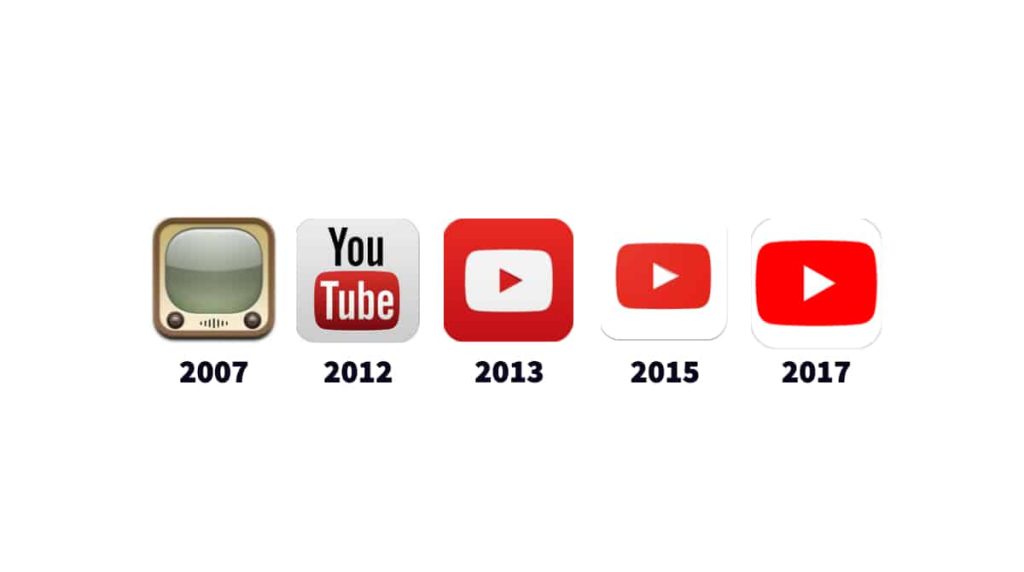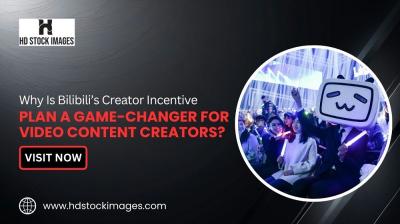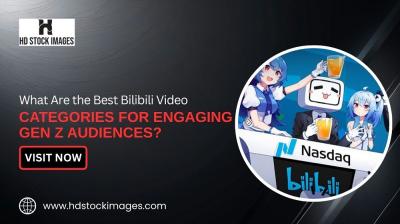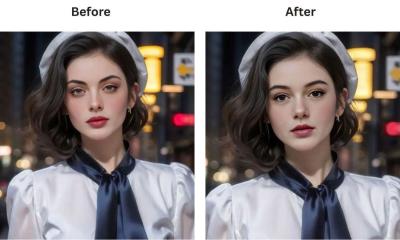Welcome to our deep dive into the world of YouTube! Over the years, this platform has transformed not only the way we consume content but also how we create and share it. What started as a simple video-sharing site has evolved into a global hub for entertainment, education, and social interaction. In this blog post, we’ll explore YouTube's fascinating history, unravel its many milestones, and discuss its incredible influence on culture and the economy.
History of YouTube

YouTube was founded in February 2005 by three former PayPal employees: Chad Hurley, Steve Chen, and Jawed Karim. They envisioned a platform where anyone could upload and share videos, making it easier for people to connect through visual storytelling. Let’s take a closer look at the key moments in YouTube’s evolution:
- 2005 - The Beginning: The first video, "Me at the zoo," was uploaded by Jawed Karim on April 23, 2005. It was a simple, 18-second clip from the San Diego Zoo that marked the start of something big.
- 2006 - Rise to Fame: YouTube quickly gained popularity, hitting one million daily views by October. In November 2006, the site was acquired by Google for $1.65 billion in stock.
- 2007 - Partner Program Launch: The YouTube Partner Program was introduced, allowing content creators to monetize their videos. This was a game-changer, empowering creators to earn a living through their content.
- 2010s - Diverse Content: The platform saw an explosion of diverse content, from vlogs and tutorials to music videos and web series. This decade also marked the rise of famous YouTubers who became celebrities in their own right.
- 2015 - 360° and Live Streaming: YouTube embraced technological advancements by introducing 360-degree videos and live streaming options, enabling creators to push the boundaries of content.
- 2020 - Pandemic Influence: The COVID-19 pandemic led to a surge in video consumption as people turned to YouTube for entertainment, education, and connection during lockdowns.
Today, YouTube boasts over 2 billion logged-in monthly users and has become an essential part of the digital landscape. Its evolution highlights the changing dynamics of media consumption and the power of user-generated content. As we look forward to what the future holds for YouTube, it’s clear that its journey is far from over!
Key Features of YouTube
YouTube isn’t just a platform for uploading and sharing videos; it’s a dynamic ecosystem with a rich set of features designed to enhance user experience and engagement. Let’s dive into some of the most significant features that make YouTube stand out:
- Video Uploading and Sharing: Users can upload videos up to 12 hours long or a 256 GB file size, whichever is smaller. Whether it's a vlog, tutorial, or music video, the possibilities are endless!
- Subscription and Notification: Users can subscribe to channels they love, getting notified when new content drops. This fosters an ongoing connection between creators and fans.
- Live Streaming: YouTube allows users to go live, letting them interact with their audience in real time. This feature has gained immense popularity, especially for events and gaming streams.
- Comments and Likes: Every video has a comment section, allowing viewers to share their thoughts, provide feedback, or connect with others. Likes and dislikes help gauge video reception.
- YouTube Shorts: In response to TikTok's rise, YouTube introduced Shorts, enabling users to create and watch short, vertical videos—perfect for quick, engaging content.
- Monetization Options: Creators can monetize through ads, memberships, and super chats during live streams, providing endless opportunities to earn money while sharing their passion.
All these features contribute to YouTube's ongoing appeal, making it a go-to platform for both casual viewers and serious content creators alike.
The YouTube Community
The YouTube community is a vast and vibrant ecosystem filled with diverse creators and passionate viewers. It’s not just about watching videos; it’s about connection, collaboration, and growing a shared passion. Here’s what makes the YouTube community special:
- Diverse Content Creation: From beauty gurus and gamers to educators and vloggers, YouTube houses countless creators each bringing their unique flavor to the platform. This diversity means there’s something for everyone!
- Engagement and Interaction: Viewers aren’t just passive observers; they engage with content through likes, comments, and shares. This interactivity enriches the viewing experience, making it more communal.
- Creator Collaborations: Creators often collaborate, bringing their audiences together and creating unique content. These partnerships can lead to exciting new ideas and broader reach.
- Supportive Community Culture: Many channels build a sense of community through regular interaction. Viewers can build friendships and bonds, enhancing their overall experience on the platform.
- Influence on Trends: The YouTube community often drives trends, from challenges to new genres of content. What’s trending today might ignite tomorrow’s viral sensations!
The sense of belonging and community is what keeps users returning for more. Whether you’re a creator or a viewer, being part of the YouTube community means being part of something much bigger!
YouTube and Content Creators
YouTube has evolved from a simple video-sharing platform into a massive ecosystem bustling with creative talent. Content creators, often referred to as "YouTubers," are the lifeblood of this platform, driving its immense popularity and growth. Originally, anyone with a camera could upload videos, and this accessibility allowed a diverse range of voices and perspectives to flourish. Today, YouTube hosts a variety of content from cooking tutorials to gaming commentary, vlogs, DIY projects, and everything in between.
What makes YouTube particularly fascinating is how it empowers individuals. Many creators have built successful careers solely through their YouTube channels, gaining millions of subscribers and views along the way. Here are some key aspects of the relationship between YouTube and content creators:
- Diverse Voices: YouTube showcases voices from every corner of the globe. This diversity fosters a rich tapestry of content that resonates with audiences from various backgrounds.
- Community Building: Creators often carve out tight-knit communities around their channels. For fans, this means a sense of belonging and engagement beyond just passive viewership.
- Creative Freedom: Unlike traditional media, YouTube provides an unparalleled level of creative freedom. Content creators can experiment with formats, engage in storytelling, or pursue niche interests without stringent oversight.
- Influencer Culture: Some YouTubers have achieved influencer status, impacting trends, opinions, and even marketing campaigns. Their reach often extends beyond YouTube, as many take their brand to other platforms like Instagram and TikTok.
However, being a successful content creator is not always smooth sailing; it requires hard work, creativity, and a willingness to adapt. With changes in algorithms and viewer preferences, maintaining relevance can be challenging, but the magic of YouTube lies in its ability to bring creative visions to life.
Monetization on YouTube
Monetization on YouTube is a transformative aspect that has contributed significantly to the platform's ecosystem, allowing creators to turn their passion into profit. YouTube has established various monetization avenues, making it simpler for creators to earn income from their content. Here are some of the primary ways in which creators can monetize their YouTube channels:
- YouTube Partner Program (YPP): Once creators meet certain eligibility requirements, they can apply to become part of YPP. This program enables them to earn money through ads displayed on their videos.
- Sponsorships: Many creators partner with brands for sponsorship opportunities. This usually involves promoting a brand's product within their content, offering a lucrative source of income.
- Merchandise Sales: Creators often leverage their brand to sell merchandise, ranging from T-shirts to custom products. Platforms like Teespring make it easy for creators to design and sell their merchandise.
- Fan Funding: Features like Super Chat and Channel Memberships allow fans to financially support their favorite creators directly, whether through donations during live streams or subscription-based perks.
- Affiliate Marketing: Many creators utilize affiliate links in their video descriptions, earning a commission on sales generated from the effective marketing of products or services.
However, monetization on YouTube comes with its set of challenges. Creators often face fluctuating incomes due to changes in ad rules, viewer engagement, and content saturation. Furthermore, adhering to community guidelines and ensuring content is advertiser-friendly are crucial to maintaining a revenue stream. Still, for many, the rewards outweigh the challenges, fueling their passion and creativity on the platform.
The Evolution of YouTube's Algorithm
Ah, the infamous YouTube algorithm! It’s a bit like a puzzle that keeps changing, isn’t it? When YouTube first started, the algorithm was pretty straightforward. The videos were ranked based on a simple metrics like views and upload date. It was easy peasy! But as the platform grew, the need for a more sophisticated system became clear.
Over the years, YouTube has introduced various updates to enhance user engagement and content discovery. Here’s a quick breakdown:
- Early Days: The algorithm primarily focused on view counts.
- 2009 Update: A shift towards user retention and the time viewers spend watching a video.
- 2012 Update: The introduction of personalized suggestions based on user behavior and historical data.
- 2016 Update: The infamous change that prioritized engagement metrics like likes, dislikes, and comments.
- 2019 Update: The algorithm began to promote “authoritative” sources to combat misinformation.
Today, the algorithm factors in more than just views. It looks at how long someone watches a video, the rate of interactions (likes, shares, comments), and even how often users click on a suggested video. It’s pretty smart, right?
The consistent goal? To keep viewers engaged and entertained, while also promoting quality content. As a creator, understanding this evolving algorithm is key. If you want your video to rise to the top of recommendations, keeping these factors in mind can make all the difference!
Future Trends for YouTube
As we look to the future of YouTube, it’s super exciting to think about where this platform could go! One thing is for sure: YouTube will continue to evolve. Here are some trends that we might see:
- Short-Form Content: With the rise of TikTok, YouTube has adapted with "YouTube Shorts." Expect to see more bite-sized content capturing audience attention quickly.
- Enhanced Personalization: The algorithm will likely become even more refined, curating streams that feel almost tailor-made for individual users.
- AR & VR Integration: As technology advances, AR and VR content may become more mainstream, offering immersive viewing experiences.
- Increased Live Streaming: Live events and streaming opportunities are set to grow, allowing creators to connect with their audiences in real-time.
- Greater Focus on Community:** With features like community posts and polls, engagement and interaction between creators and their audience will take center stage.
Each of these trends points towards a more interactive, engaging, and immersive experience for both creators and viewers. And who knows? We might even see the emergence of new monetization methods or features that revolutionize content creation. The key takeaway? With technology rapidly advancing, staying flexible and adapting will be essential for anyone involved in the YouTube ecosystem!
A Closer Look at YouTube and Its Evolution
YouTube started as a simple video-sharing platform in February 2005 and quickly transformed the way we consume content online. Initially, it was launched by three former PayPal employees, Chad Hurley, Steve Chen, and Jawed Karim, enabling users to upload, share, and view videos for free. Its first major breakthrough came when it hosted the "Me at the zoo" video, which remained the most viewed video for years.
In November 2006, Google acquired YouTube for $1.65 billion in stock, marking a pivotal moment in its evolution. This acquisition allowed YouTube to expand its infrastructure and features, such as improving video quality and introducing monetization options for creators.
Over the years, the platform has undergone significant transformations, including:
- Introduction of High Definition (HD) Video: In 2008, YouTube began supporting HD video, enhancing viewer experience.
- Content ID System: Launched in 2007, this feature allowed copyright owners to identify and manage their content on the platform.
- Live Streaming: Introduced in 2011, YouTube enabled real-time broadcasting, opening new avenues for events and engagement.
- YouTube Red (now YouTube Premium): Launched in 2015, this subscription service provided ad-free content and exclusive shows.
- Algorithm Changes: Over the years, YouTube has refined its recommendation system to enhance user engagement and satisfaction.
Today, YouTube is a global platform with over 2 billion logged-in monthly users, becoming a vital space for marketers, educators, and entertainers alike. It has empowered creators with tools to build communities and monetize their passion.
In conclusion, YouTube's evolution from a simple video-sharing site to a multifaceted platform exemplifies the dynamic nature of digital media, shaping content consumption and creation across the globe.
 admin
admin








